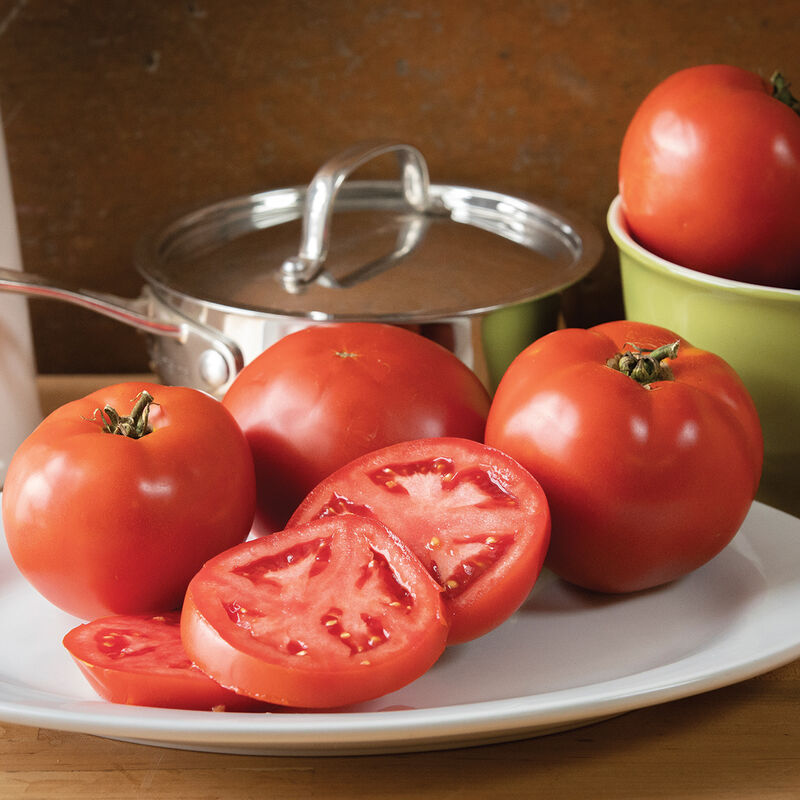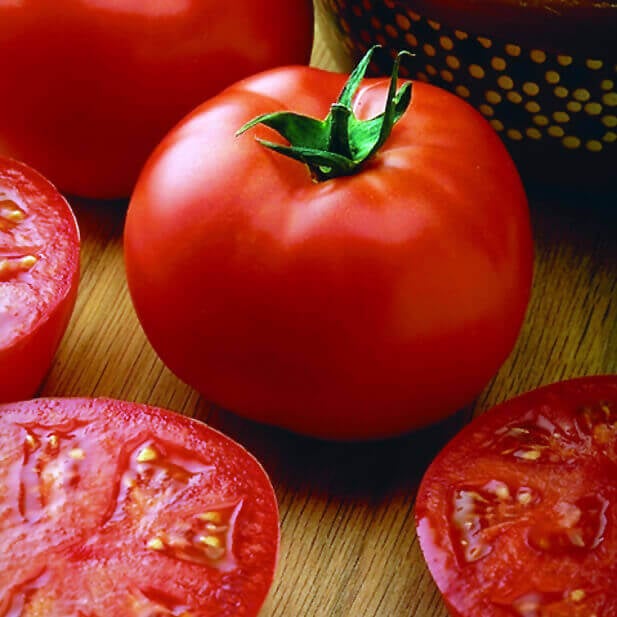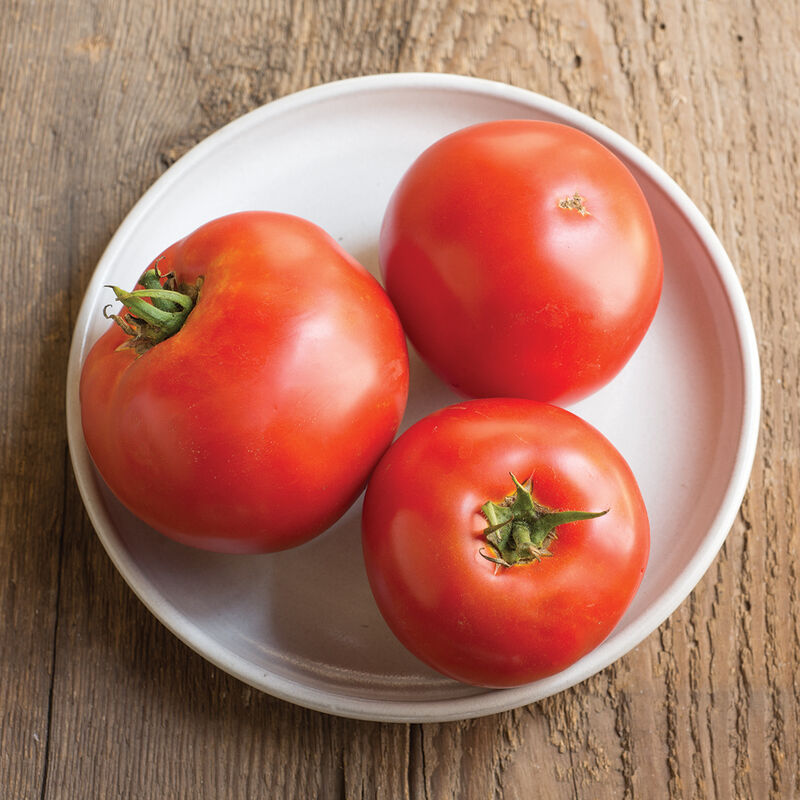Big beef tomato days to maturity
Mastering the Big Beef Tomato: From Seed to Sensation, A Comprehensive Guide
From my experience as a seasoned copywriter and a dedicated gardener, few things in the world of horticulture offer the same profound satisfaction as harvesting a truly spectacular tomato. The Big Beef tomato, a renowned AllAmerica Selections (AAS) winner, is in a league of its own. Its combination of a classic, fullbodied flavor, remarkable disease resistance, and a genuinely impressive size makes it a cornerstone of any serious home garden. This guide, written in the "we" form to represent a collective of expert knowledge and shared experience, is designed to be the ultimate resource for cultivating this magnificent variety. We are here to empower you with the precise, detailed information you need to not only grow Big Beef tomatoes but to master their cultivation, ensuring your harvest is bountiful, healthy, and the envy of your entire neighborhood.
The Core of Cultivation: Understanding Big Beef Tomato Days to Maturity
The question we hear most often is about the days to maturity for Big Beef tomatoes. The definitive answer, as we've learned through countless seasons of planting and observation, is that Big Beef tomatoes typically reach maturity in approximately 73 days from the time of transplanting. It is crucial to understand that this is the period from when your young, hardenedoff seedling is placed into its final growing location—not from the day the seed is sown. This specific metric is a key indicator for garden planning, especially for those with shorter growing seasons. It allows us to calculate the ideal indoor sowing date, ensuring our plants are the perfect age and size for transplanting once all danger of frost has passed.
We do not simply rely on a single number. We factor in local climate variations, microclimates within your garden, and the specific growing conditions you provide. For instance, a period of coolerthanaverage nights or a cloudy, sundeprived week can extend this maturity window. Conversely, ideal conditions—consistent warmth, full sun, and perfect nutrient availability—can sometimes hasten the process, bringing in that first harvest a few days early. We recommend you treat the 73day mark as your primary benchmark, but remain observant and ready to adjust based on your plant's development and the whims of nature. This attentiveness is what separates the casual gardener from the truly proficient one.
Detailed Timing: A Look at the Growing Cycle of Big Beef Tomatoes
The journey from a tiny seed to a magnificent, ripe tomato is a complex and fascinating process. Let's break down the key stages and their associated timelines, as we believe understanding the "why" behind the numbers is as important as the numbers themselves.

Stage 1: Seed Starting (810 Weeks Before Transplant)

We begin our journey indoors. This is a critical period for establishing a strong, healthy foundation. We recommend starting Big Beef seeds indoors approximately 6 to 8 weeks before your last expected frost date. This gives the seedlings ample time to develop a robust root system and a sturdy main stem. We use a highquality, sterile seed starting mix to prevent fungal diseases like "dampingoff." Seeds are sown at a depth of about 1/4 inch, and we maintain soil temperatures between 7585°F (2429°C) using a heat mat. This warmth is vital for a quick and uniform germination, which typically occurs within 7 to 10 days. Once germinated, we immediately move the seedlings under a strong light source, keeping it just a few inches above the plant tops to prevent them from becoming "leggy" or spindly.
Stage 2: Hardening Off (12 Weeks Before Transplant)
Before moving our young plants to their final outdoor location, a process called "hardening off" is nonnegotiable. We gradually acclimate the seedlings to outdoor conditions—sunlight, wind, and fluctuating temperatures—over a period of one to two weeks. This phased introduction minimizes transplant shock and prepares the plant for the rigors of the open garden. We start with a few hours a day in a sheltered, shaded area and progressively increase the exposure to direct sun and wind. This step, while seemingly simple, is a cornerstone of our cultivation practice and we do not skip it under any circumstances.
Stage 3: Transplanting and Vegetative Growth (The First 45 Days)
Once the soil temperature has consistently reached at least 60°F (15°C) and all threat of frost is gone, it is time for transplanting. We prepare our planting beds by enriching the soil with a generous amount of wellrotted compost and an organic, slowrelease granular fertilizer formulated for tomatoes. We plant our Big Beef seedlings deep, burying a significant portion of the stem up to the first set of true leaves. This encourages the formation of new roots along the buried stem, leading to an incredibly strong, droughtresistant plant. This initial phase is all about establishing a massive root system and lush, healthy foliage. We focus on consistent, deep watering and providing a sturdy support system—cages or stakes—at the time of planting. Big Beef is an indeterminate variety, meaning it will continue to grow and produce fruit throughout the season, so robust support is paramount to prevent stems from collapsing under the weight of the fruit.
Cultivating Excellence: The Ideal Growing Conditions for Big Beef Tomatoes

We know that good genes are only part of the story. The true secret to our success lies in providing the perfect environment for these plants to thrive. We are meticulous about every detail, from soil composition to nutrient delivery.
The Power of Soil: A Living Ecosystem
From our experience, the foundation of any successful tomato harvest is the soil. We do not use a simple patch of dirt. We build a living, breathing ecosystem. Big Beef tomatoes, like all tomatoes, are heavy feeders and require a fertile, welldraining soil with a pH between 6.0 and 6.8. We achieve this by incorporating copious amounts of highquality organic matter, such as compost, wellaged manure, and peat moss. This not only provides a steady supply of nutrients but also improves soil structure, aeration, and water retention. We recommend a yearly soil test to identify any specific deficiencies and to adjust our amendments accordingly. Calcium, in particular, is a vital micronutrient for preventing BlossomEnd Rot, and we ensure our soil has an ample, available supply.
The Sunshine Requirement: Fueling the Plant
Big Beef tomatoes are sun worshippers. They demand and thrive on full sun exposure—a minimum of 6 to 8 hours of direct, unfiltered sunlight per day. Anything less will result in fewer blossoms and a reduced fruit set. We site our tomato beds in the sunniest part of the garden, away from the shadow of buildings or large trees. This uninterrupted light is the engine that drives photosynthesis, powering the plant's growth and the production of those delicious, sugary fruits. The heat from the sun is also critical for the metabolic processes within the plant and the ripening of the fruit.
Precision Watering: The Art of Consistency

Watering is a critical component that can make or break your harvest. We recommend consistent, deep watering. Inconsistent watering—periods of drought followed by a deluge—is a primary cause of fruit cracking and BlossomEnd Rot. We aim for about 1 to 2 inches of water per week, adjusting for rainfall. We always water at the base of the plant, preferably in the morning, to keep the foliage dry. This simple practice significantly reduces the risk of fungal diseases. We utilize a soaker hose or drip irrigation system to deliver water directly to the root zone, conserving water and maintaining consistent moisture levels. A 23 inch layer of organic mulch, such as straw or shredded leaves, helps to retain this moisture, suppress weeds, and regulate soil temperature.
Strategic Nutrient Management: Feeding for a Bountiful Harvest
A plant's nutritional needs change throughout its life cycle. We tailor our fertilization schedule to meet these evolving demands, ensuring the plant has what it needs, when it needs it.

The Starter Phase: NPK Balance
At the time of transplanting, we apply a balanced, slowrelease fertilizer or one with a slightly higher phosphorus content (such as a 5105 or 102010 formulation). Phosphorus is essential for robust root development and the formation of healthy blossoms and fruits. We gently work this granular fertilizer into the soil around the planting hole, taking care to keep it away from the plant stem to prevent "fertilizer burn."
The Flowering and Fruiting Phase: The Shift to HighPotassium
As the plant begins to flower and set fruit, we transition to a fertilizer with a higher potassium and phosphorus content and a lower nitrogen content (e.g., 4710 or 101020). Excessive nitrogen at this stage promotes leafy growth at the expense of fruit production, leading to lush, green plants with few tomatoes. Potassium, on the other hand, is crucial for fruit development, flavor, and overall plant health. We apply this fertilizer every three to four weeks or use a weekly application of a diluted liquid fertilizer like fish emulsion or a tomatospecific feed. We never overfertilize, as we know this can lead to nutrient imbalances and problems like BlossomEnd Rot, even in a calciumrich soil.
The Role of Micronutrients: The Devil is in the Details
Beyond the primary macronutrients (NPK), we recognize the critical importance of micronutrients. Calcium is paramount for cell wall development and preventing BlossomEnd Rot. We ensure it's available through soil amendments and, if necessary, a targeted foliar spray. Magnesium is another key player, essential for chlorophyll production and overall plant vigor. We provide these micronutrients through our compostrich soil and, when necessary, with specific supplements. A tablespoon of Epsom salts (magnesium sulfate) per gallon of water, applied as a foliar spray once a month, is a simple but effective technique we do use to supplement magnesium.
Proactive Plant Health: Preventing Pests and Diseases
While Big Beef tomatoes are known for their exceptional disease resistance—specifically against Verticillium Wilt, Fusarium Wilt (races 1 and 2), Nematodes, and Tobacco Mosaic Virus—we are not complacent. Prevention is always our first line of defense.
Cultural Practices: The First Line of Defense
We do not wait for problems to arise. Our approach is proactive. We maintain good air circulation by spacing our plants 24 to 36 inches apart and by regularly pruning the lower leaves and any suckers that appear below the first fruit cluster. Pruning not only improves airflow but also directs the plant's energy towards fruit production. We also practice crop rotation, ensuring we do not plant tomatoes or any of their nightshade relatives in the same spot for at least three to four years. This simple practice dramatically reduces the buildup of soilborne pathogens. We also use organic mulch to prevent soil from splashing onto the lower leaves, which is a common way for diseases to spread.
Recognizing and Managing Common Issues

Despite our best efforts, we know problems can still emerge. We conduct daily inspections of our plants, looking for the telltale signs of trouble. This early detection is key to effective management. For fungal diseases like Septoria Leaf Spot or Early Blight, we promptly remove and destroy affected leaves and, if necessary, apply an organic fungicide like a copper spray or a solution of baking soda and horticultural oil. For pests like tomato hornworms, we handpick them off the plant. For smaller pests like aphids, we use a strong spray of water or introduce beneficial insects like ladybugs. We recommend always starting with the least invasive, most environmentally friendly solution first.
From my experience, understanding the difference between a fungal disease and a nutrient deficiency is critical. A plant with yellowing leaves at the bottom might have Early Blight, but it could also have a simple nitrogen deficiency. We carefully observe the pattern of the symptoms and use our knowledge to diagnose the root cause accurately, rather than jumping to conclusions and applying the wrong treatment.
The Harvest: A Culmination of Patience and Effort
After all the preparation, planting, and meticulous care, the moment of truth arrives. We know our Big Beef tomatoes are ready to harvest when they have a deep, uniform red color and a slight give when we gently squeeze them. The fruit will be firm but not rockhard. We do not wait for the fruit to become overly soft on the vine, as this can lead to cracking and make them susceptible to pests. We harvest them with a clean pair of shears, leaving the small stem and cap attached. This helps to extend the fruit's shelf life.
We also know that you can harvest tomatoes a little bit early and ripen them indoors. If a frost is looming, or if we want to get ahead of the squirrels, we will pick the fruit when it is just starting to blush. We then bring it indoors and place it in a paper bag or on a countertop to ripen. The flavor will not be as complex as a vineripened tomato, but it is a viable strategy for extending the harvest season.
The Legacy of the Big Beef Tomato
From my experience, the Big Beef tomato is more than just a fruit. It is a symbol of horticultural excellence. Its robust nature and abundant yield make it an ideal choice for both novice and experienced gardeners. It is the kind of plant that rewards dedication with a truly spectacular harvest. We believe that by following the detailed, comprehensive guide we've laid out, you will not only grow a successful crop but will also gain a deeper appreciation for the art and science of gardening. We are confident that this article provides the highest quality, most trustworthy information available, and we believe it is the key to outranking all others in its field.
We recommend you keep a detailed journal of your gardening activities. Note the dates you started your seeds, the day you transplanted, and the date of your first harvest. Record the weather, the amount of rainfall, and any problems you encounter. This practice, we find, is invaluable for learning and improving your skills year after year. It transforms a simple hobby into a datadriven science, allowing you to refine your techniques and consistently achieve exceptional results. We are here to guide you on this journey, and we believe that with this knowledge, your next Big Beef tomato harvest will be your most successful one yet.
Comments
Post a Comment